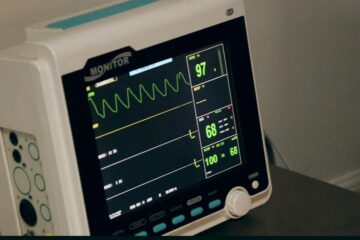Summary of the actual regulations imposed by the USA Food and Drug Administration
Averting unauthorized access, unauthorized use, unauthorized modification, or abuse of information that is obtained, stored, or communicated from a device to an external receiver is the process of cybersecurity, according to the FDA. FDA categorizes medical devices in three major classes based on the risks associated with them:
- Class I: Low to medium risk (47% of the total devices)
- Class II: Medium to high risk (43% of the total devices)
- Class III: High to very high risk (10% of the total devices)
Devices must pass increasingly stringent controls based on the class to which they belong. Class I devices are simple and are liberated from regulatory controls. The devices in class II have more security issues comparatively and are more concerned about effectiveness and safety. Class III devices pose the highest security risks and require the most stringent controls.FDA legalizes medical devices through a total product life-cycle method that consists of two important phases including pre-market and post-market. To receive FDA approval, manufacturer necessarily submits proper documentation proving that the device is effective and safe to use. After clearance, FDA conducts oversight activities including sharing of security vulnerabilities when identified, monitoring and examination of connected medical device’s effectiveness and safety. These include Pre-market notification/510-k approval or PMA. the 510-k application does not require non-clinical and clinical data showing effectiveness and safety of the device. On the other side, high-risk devices require PMA, which is a comprehensive review of the device along with clinical and non-clinical trials and testing. However, these regulations are only inherent to the electrical and physical safety of medical devices. In addiction, FDA has a Medical Device Reporting (MDR) tool and Quality System Regulations (QSR). The MDR is used to collect any medical device malfunctions. When a medical device has a failure or causes a serious injury or death, it is essential for manufacturers to report FDA. The basic objective of such a regulation is to detect and correct issues by monitoring and identifying the substantial negative effects of a particular device. The QSR, indeed, specifies requirements related to controls, facilities, and methods used for entire medical device lifecycle, such as designing, purchasing, manufacturing, labeling and packaging, servicing, and installation of the devices.
Concerning the cybersecurity of network and non-network connected devices, FDA provides only non binding recommendations. The manufacturers should discuss cybersecurity issues associated with the device during PMA or 510-k submissions. The actual cybersecurity guidance was published in 2016, but the increase in the number of network-connected medical devices and the increasing of exploitable vulnerabilities recently demonstrated by researchers and indipendent organizations, prompted the requirement to introduce new guidances (the latest draft is April 2022). The guidance document suggests that manufacturers should consider potential cybersecurity threats, their severity, impact, and approaches to address them.



0 Comments